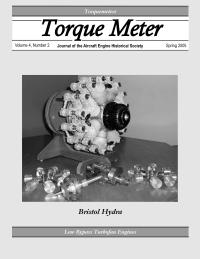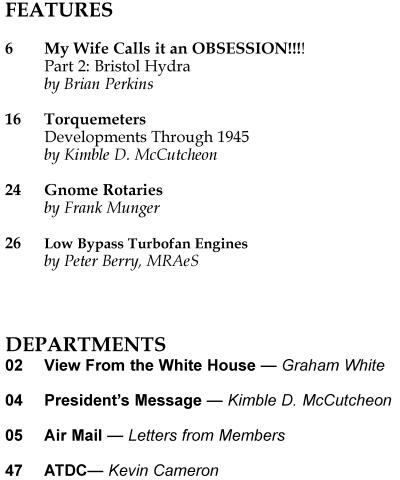
Torque Meter
Spring 2005 Issue
 |
|
My Wife Calls it an OBSESSION !!!!
"The Bristol Hydra is a 16-cylinder, twin row, twin overhead camshaft, poppet valve unit with the two rows of cylinders in line to allow for the camshafts. There are only two valves per cylinder, which are operated by the overhead cams through bucket tappets. I had seen the Bristol Hydra when I had first visited the Industrial Museum and had been fascinated by its complete difference to any of the other engines. It had been returned to the collection at the Rolls-Royce Heritage Trust so that I had an opportunity to study it in more detail." |
|
Aero Engine Drawings by Frank Munger |
 |
Low Bypass Turbofan Engines Following the development and application of the centrifugal and axial-flow turbojet engines manufacturers continued development of a second-generation of jet engine, the low bypass turbofan. This arrangement is one where some of the air from the low-pressure front fan is "by-passed" outside of the "hot" core, but within the casing of the engine, before being mixed with the hot airflow at the jet efflux. The bypass ratios (BPR) of these engines are usually values up to 1:1. To allow the turbofan engine to meet various flight demands, it was found that a twin-shaft design would allow the low-pressure (LP) turbine, driving the front fan and low-pressure (LP) compressor, to reach its optimum operating speed, while the high-pressure (HP) turbine, driving the high-pressure (HP) compressor, could then find its own optimum operating speed. Three-shaft turbofans (e.g. the RB.199), have an added Intermediate (IP) compressor and (IP) turbine. |
